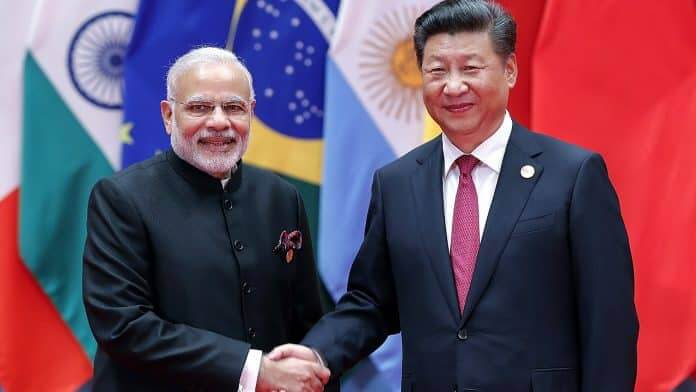While the eyes of the world were on the historic meeting between North Korean leader Kim Jong Un and his South Korean counterpart President Moon Jae-in, an equally important meeting was taking place a few thousand kilometres away between Indian Prime Minister Narendra Modi and Chinese President Xi Jinping.

A meeting such as this would have been inconceivable only a year ago, as the two nuclear nations faced a flashpoint at the Sino Bhutanese border. Yet, in the rapidly changing world order, equations between friends and enemies can alter overnight. Whether this meeting was a ploy playing on the old adage of keep-your-friends-close-but-your-enemies-closer, only time will tell. But for the moment, it seems both leaders are content in resetting the gears to neutral.
Both have their reasons for doing so. Modi has an election coming up in 2019 and while jingoism plays well to stir up nationalistic fervour, an armed confrontation could raise questions about leadership. Economically, while India seems to be clicking away at a GDP growth of high 6 – low 7%, the country is still working through the hangover following demonetisation, and settling in the Goods and Services Tax introduced recently.
India needs time to consolidate its internal economy and move more rapidly towards industrialisation and infrastructure development. The country has also been more reliant on its nonaligned policies, which historically have seen it balance its allegiances towards both the United States and Russia.
But with Russia enjoying a good relationship with China, and with the US under President Trump becoming more unpredictable, India needs to forge its own way forward on its relationship with China.
It has also been widely reported that China was taken aback at the aggression and resolve that India showed in its 72-day standoff with the Chinese army at Dong Lang or Doklam. Experts have said that for the first time China shifted its focus from regarding Japan (after the US) to be its second most dangerous adversary. Yin Guoming, a Chinese foreign affairs analyst wrote, “China needs to re-assess, re-examine, and reformulate its India strategy.”
Having an informal meeting with Modi was the Chinese President’s way of resetting the relationship dial back to baseline. Besides, the matter of trade and commerce between the two countries is also strong, and it is in China’s interest to make it grow. For example, bilateral trade between the two countries in 1988 was only $107.96 million; in 2017 the total trade reached $84.44 billion, rising 18.5% from $71.2 billion in 2016.
With major threats of a trade war coming from the US, China needs to keep its options for world markets open. No doubt people of Indian origin watched the handshake between the two Korean leaders and wondered whether they would ever see such a thawing of relations with neighbouring Pakistan.
The two Koreas were born after World War II in 1945, just before the division of India took place. It has taken 73 years for the two Koreas to start reaching out. But perhaps the dynamics are different between India and Pakistan. Religion, cross border terrorism and generations raised on a diet of hate-and-destroy propaganda – besides the deeply entrenched political opportunism – may make this a bridge too far.
Modi-Xi meet: Are India and China 'friends' again?
Whether the meeting between Modi and Xi was a ploy playing on the old adage of keep-your-friends-close-but-your-enemies-closer, only time will tell

Reading Time: 2 minutes



